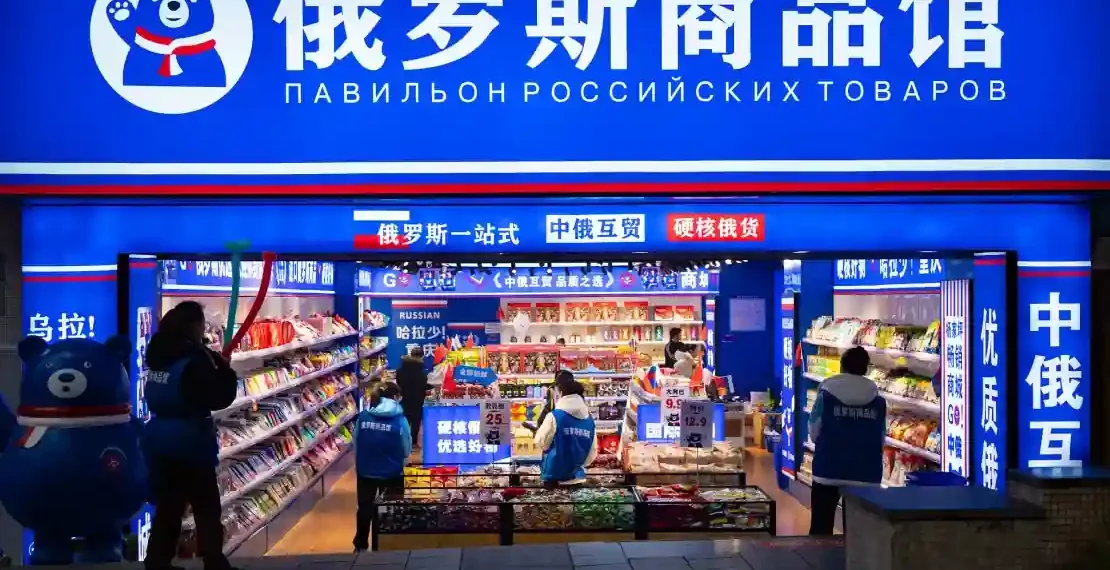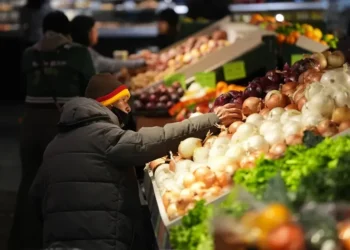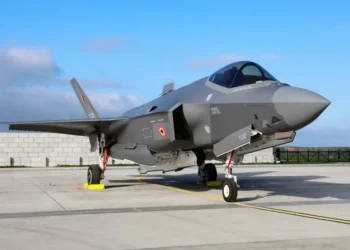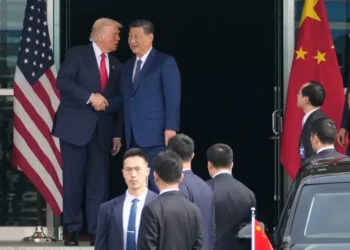‘Made in Russia’ Goods Take China by Storm
Across China, a new retail phenomenon is taking shape: stores filled with Russian-made products are popping up everywhere. Decked out in the colors of the Russian and Chinese flags, these stores welcome customers with iconic Russian dolls and shelves lined with chocolates, cookies, honey, and vodka.
While some Chinese shoppers are excited by the variety, others are left puzzled by the sudden surge in these stores, questioning why they seemed to appear almost overnight.
Since 2022, thousands of these Russian specialty stores have opened across China, a trend fueled by the strengthening economic ties between Beijing and Moscow. Russia, facing Western sanctions following its full-scale invasion of Ukraine, has found China to be a crucial economic partner.
Trade between the two nations has reached record highs, with Chinese imports of Russian oil, gas, and coal dominating the exchange. However, Russian food products—such as ice cream, biscuits, and milk powder—have also seen a sharp rise in popularity.
To capitalize on the booming demand, Chinese businesses have jumped into action. More than 2,500 new companies involved in Russian product trade have been registered since 2022, with nearly half established in the past year alone. Most of these firms are concentrated in Heilongjiang, the northeastern province bordering Russia, but their reach has expanded to other regions as well.
Beyond traditional imports like aquatic and agricultural products, Russian-branded chocolates, biscuits, and milk powder have gained a special place among Chinese consumers. Moscow’s promotion of the “Made in Russia” brand has contributed to this growing appeal.
In a Beijing store, a shop assistant enthusiastically arranged candies and biscuits, pointing out bestsellers such as Russian honey and premium chocolates. A recorded message played in the background, extolling the health benefits and high quality of Russian goods.
For many Chinese shoppers, Russian products carry a perception of authenticity and quality. “Russia is a vast country with rich resources, and its people are very friendly,” said Liang Jinghao, a tourist from Shanxi province.
Su, a 20-year-old entrepreneur from Gansu province, has opened three Russian goods stores since September 2023. While her stores also sell Sri Lankan and Australian products, she noted that Russian goods are far more popular. “I think Russian products are a better fit for the local taste,” she said.
The surge in Russian goods aligns with the deepening ties between China and Russia. As tensions with the U.S. escalate, both nations have grown closer, united by a common goal of challenging Western influence.
Public sentiment in China has also leaned favorably toward Russia. A 2023 poll from Tsinghua University’s Center for International Security and Strategy found that 66% of respondents viewed Russia favorably, while 76% held unfavorable views of the U.S.
The craze for Russian goods gained momentum in early 2022 when the “Russian State Pavilion,” an e-commerce store endorsed by the Russian embassy, went viral on Chinese social media. Within three days, Chinese shoppers spent nearly 6 million yuan ($826,000) on Russian goods.
By April 2023, over 300 Moscow-based companies had joined Chinese e-commerce giants like Taobao and JD.com. Later that year, the first “Made in Russia Festival and Fair” debuted in Shenyang and Dalian, featuring over 150 Russian companies. The event resulted in $2.3 million in sales and has since expanded to other cities, including Chengdu.
The Russian Export Center, a state-run organization, has also stepped up efforts, planning to establish 300 official Russian goods stores across China by the end of this year.
With popularity comes scrutiny. Reports have emerged of Russian-branded products in these stores that are actually manufactured in China or even other countries like Malaysia. Influencers and media investigations have exposed mislabeled items, sparking backlash on Chinese social media.
“I’ve never seen these candies in Russia. The packaging is all fake,” said one Russian influencer on Douyin, China’s version of TikTok. Another questioned the authenticity of sausages being sold in a Shanghai store, while a shopkeeper pleaded with her to stop filming.
The Russian embassy in China issued a warning about counterfeit goods, stating that mislabeled products “often do not meet quality requirements” and differ from their genuine Russian counterparts. In response, market regulators in Shanghai conducted inspections on 47 Russian goods stores, uncovering misleading advertising and unauthorized branding.
Some stores were fined or shut down, while others were required to clearly label domestically produced goods. Similar inspections have since been carried out in other cities.
Despite the controversy, demand for Russian goods remains strong. The Russian Export Center has advised consumers to look for the official dove-shaped “Made in Russia” label on packaging to ensure authenticity.
With official backing and consumer enthusiasm still high, the presence of Russian goods stores in China is likely to grow. However, the industry will need to address concerns about product authenticity to maintain trust and sustain its rapid expansion.
This article was rewritten by JournosNews.com based on verified reporting from trusted sources. The content has been independently reviewed, fact-checked, and edited for accuracy, neutrality, tone, and global readability in accordance with Google News and AdSense standards.
All opinions, quotes, or statements from contributors, experts, or sourced organizations do not necessarily reflect the views of JournosNews.com. JournosNews.com maintains full editorial independence from any external funders, sponsors, or organizations.
Stay informed with JournosNews.com — your trusted source for verified global reporting and in-depth analysis. Follow us on Google News, BlueSky, and X for real-time updates.













